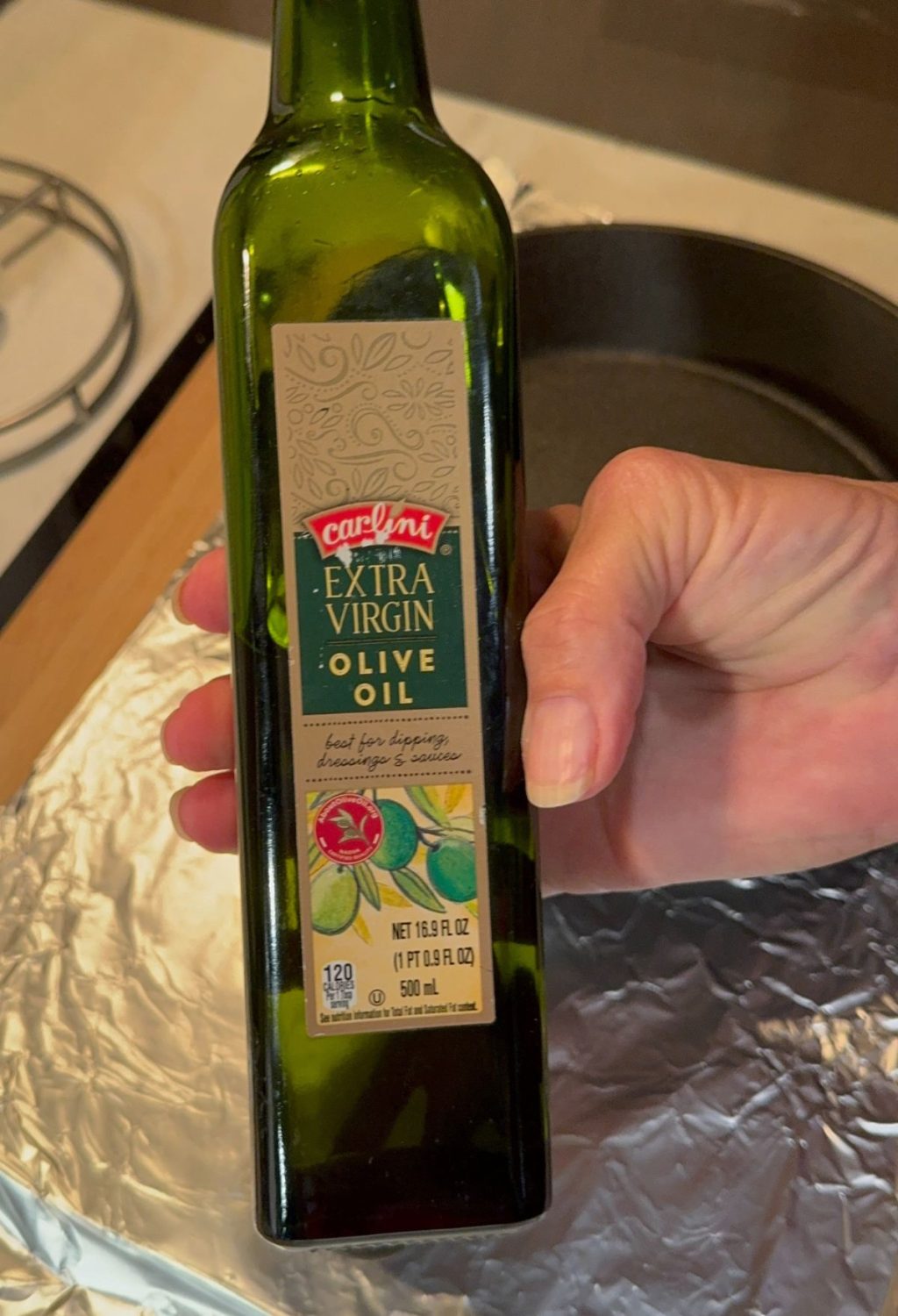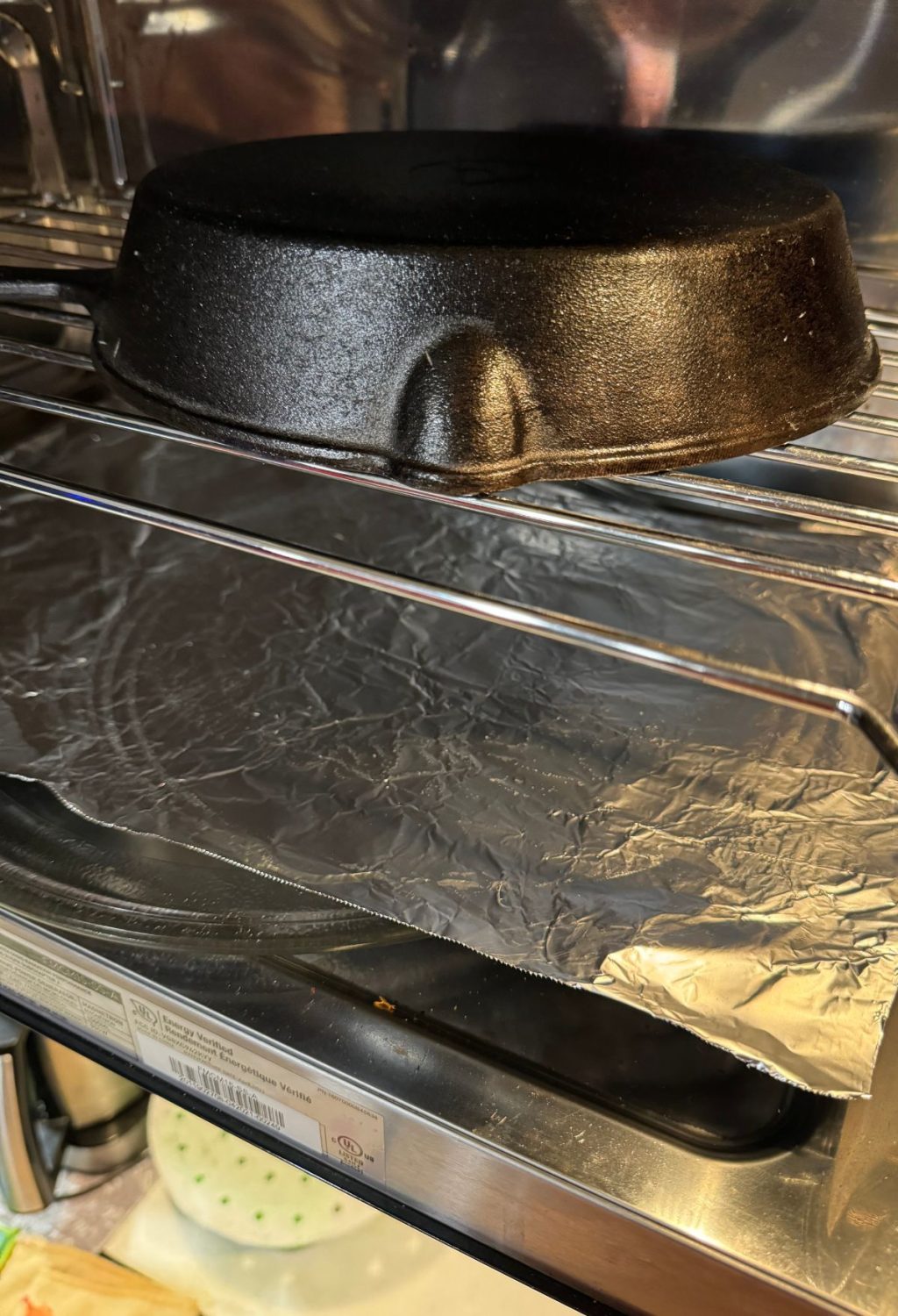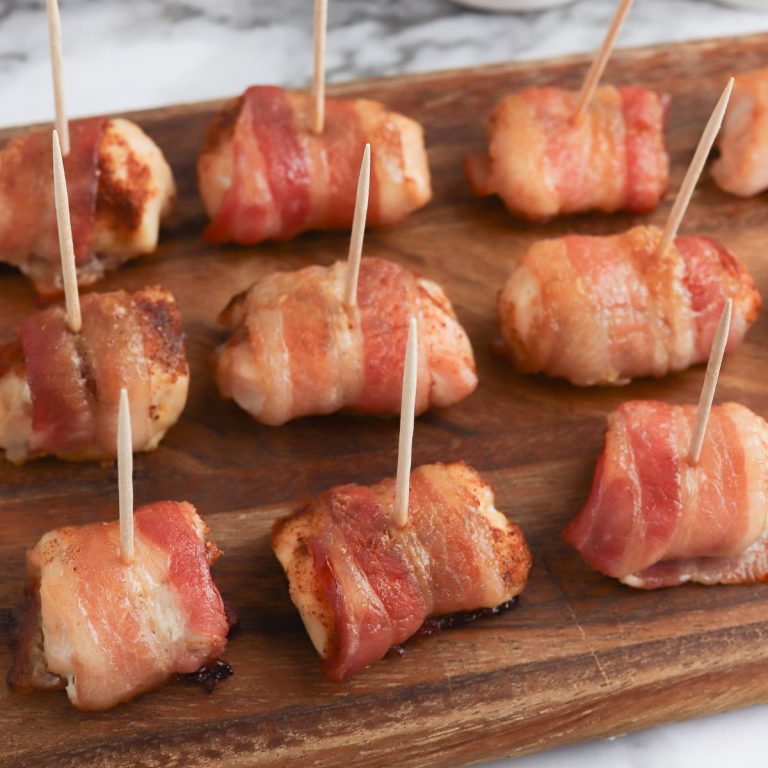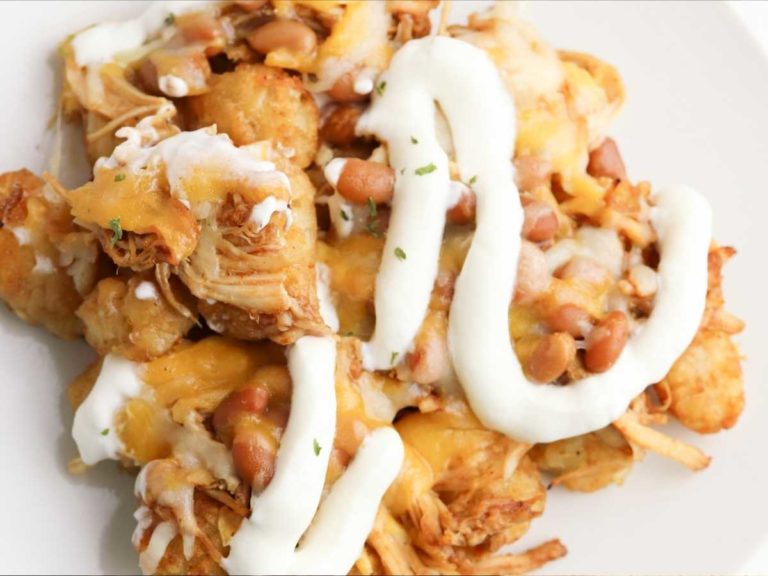How to Season a Cast Iron Skillet with Olive Oil
How to perfectly season your cast iron skillet with olive oil, ensuring a lifetime of sizzling meals. Our guide covers all you need to know.
Season Your Skillet with Olive Oil – Simple Guide
Welcome to the art of perfecting your cast iron skillet.
I love my skillet and wouldn’t be without it. Besides using it at home, it’s perfect for camping and also on the Blackstone griddle.
A well-seasoned cast iron cookware is a kitchen staple, renowned for its durability and unmatched heat retention.
I use it to make Raspberry Cheesecake Donuts (Paczki) and so much more.

Seasoning your cast-iron skillet with the best oil is crucial not just for its longevity, but also for the flavor it imparts to your dishes.
Today, we delve into the classic method of the seasoning process with a modern twist using the all-time favorite olive oil.
Follow along as we guide you through the steps and unveil the benefits of choosing olive oil for this culinary ritual.

Seasoning a cast iron skillet is basically the same as seasoning a Blackstone griddle.
Step-by-Step Guide to Seasoning with Olive Oil
Seasoning a cast iron skillet is integral to its maintenance routine. By doing so, you create a natural, non-stick coat that also prevents rust. Here’s how you can accomplish this with olive oil:

Step 1: Cleaning the Skillet
Begin with a clean skillet. Wash it with warm water and a scrub brush. Avoid soap if the skillet is already seasoned; otherwise, mild soap can be used for a new or rusty skillet that you’re attempting to refurbish.

Be sure to dry the cast iron skillet completely.

Step 2: Preheating the Oven
Preheat your oven to 350 ̊F (175 ̊C), which is the perfect temperature to allow the oil to bond to the skillet without reaching the smoke point of olive oil.

Step 3: Applying a Thin Layer of Olive Oil
After drying your skillet completely, apply a thin layer of olive oil over every surface, including the bottom and handle. Use a clean cloth or paper towel for a smooth, even coat.

Step 4: Heating the Skillet in the Oven
Place the skillet upside down in the preheated oven, with a sheet of aluminum foil or a baking sheet on the bottom rack to catch any drips. Bake for one hour. The heat allows the oil to break down and polymerize, creating that coveted non-stick layer.

Step 5: Cooling and Repeating the Process
After the hour is up, turn off the oven and let the skillet cool down completely inside the oven before removing it. If required, repeat the oiling and heating process for further built-up seasoning.
Benefits of Using Olive Oil for Seasoning
One of the main benefits of using olive oil for seasoning your cast iron skillet is its availability and health benefits.
It is a natural and healthier alternative compared to other fats and oils.
Additionally, extra-virgin olive oil has a reasonably high smoke point that is ideal for achieving the perfect sear on your foods.
Tips for Maintaining a Seasoned Cast Iron Skillet
It’s important that you take care of your seasoned skillet to maintain its non-stick properties.
- Never soak the skillet or leave it in the sink because it could rust.
- After each use, clean it with a stiff brush and hot water and dry it immediately.
- Apply a light coat of oil after every wash.
- Avoid sudden temperature changes to prevent warping.

Comparison with Other Oils for Seasoning
While vegetable oils and shortening are common for seasoning skillets, they tend to create a stickier surface over time and may contribute to unnecessary trans fats in your diet.
Olive oil, although having a lower smoke point than some alternatives like canola oil, provides a durable and flavorful coating ideally suited to a variety of dishes.
Different Oils to Try
- Flaxseed Oil
- Avocado Oil
- Grapeseed Oil
- Peanut Oil
- Coconut Oil
- Bacon Grease
First Dish to Cook in a Newly Seasoned Skillet
After seasoning your skillet with olive oil, why not christen it with a simple and delicious meal that enhances the natural flavors? Pancakes or scrambled eggs are fantastic options for testing out your newly seasoned skillet’s non-stick surface.
Conclusion
In conclusion, season cast iron skillet with olive oil is a time-honored technique that rewards you with a durable, non-stick surface and enhances the flavors of your favorite dishes.
The process is straightforward, and the benefits are numerous, from the health aspect of using natural oils to the culinary advantages of olive oil’s smoke point.
We encourage you to share your experiences with us and the community, from your first seasoning attempt to the delicious meals you prepare with your newly seasoned skillet.
A protective layer on the entire surface of the pan, will reward you with a well-seasoned pan for a very long.
Remember, the care you invest in your cast iron skillet will pay off in the long run, so enjoy the journey of perfecting this kitchen essential.
Frequently Asked Questions (FAQs)
What type of oil is best for seasoning cast iron cookware?
Olive oil, especially extra virgin olive oil, is a popular choice due to its flavor and health benefits. However, some users prefer oils with higher smoke point, like soy-based vegetable oil or canola oil, for a more durable layer of seasoning.
Can I use olive oil even though it has a relatively low smoke point for high temperatures?
Yes, you can. Olive oil has a reasonably high enough smoke point to be used for seasoning, as long as you avoid excessive heat during the initial seasoning process. A thin layer of oil applied correctly can create a protective non-stick surface.
How do I know if I’ve used too much oil on my cast-iron pan?
If there are oil drips or a sticky residue after the seasoning process, you’ve likely used too much oil. Apply a very thin layer and wipe away any excess oil with a paper towel before heating the pan upside down in the oven.
Is it a good idea to cook acidic foods in a newly seasoned skillet?
It’s best to avoid acidic foods like tomatoes or salad dressings initially, as they can strip the new layer of seasoning. After several uses and layers of seasoning build up, the pan will handle acidic foods better.
Can I wash my cast iron with dish soap?
Mild dish soap and warm water can be used occasionally. However, it’s generally recommended to clean cast iron with hot water and a brush or scouring pad to maintain the seasoning.
Why should I avoid abrasive scrubbers or harsh detergents?
Steel wool and harsh detergents can damage the cooking surface and remove built-up layers of seasoning from your cast iron cookware.
I just bought a new pan. Should I season it before using it for the first time?
Absolutely. Even new cast iron pans benefit from additional seasoning for best results. Follow the manufacturer’s guidelines if provided.
Are animal fats or vegetable oil better for seasoning?
Both animal fats, which are high in saturated fat, and vegetable oils, high in unsaturated fat, can be used for seasoning. The choice may depend on personal preference, though vegetable oils are a good option for those preferring a plant-based alternative.
Can I use my seasoned skillet in the oven or on high heat?
Yes, well-seasoned cast iron is perfect for high heat and oven use. Remember to season dutch ovens and other cast-iron cookware regularly to keep them in good condition.
What should I cook in my seasoned cast iron the first time?
Simple, fatty foods like bacon or a basic grilled cheese sandwich can help strengthen the seasoning on a new pan. Avoid cooking with strong-smelling ingredients or foods that may stick, which could be frustrating the first time around.
How do I maintain the nonstick surface over time?
Regular use, proper cleaning, a quick wipe with the right oil after each use, and occasional re-seasoning will help maintain the nonstick surface and keep your skillet in good condition for a long time.
My cast iron skillet has lost its seasoning. What’s the best way to restore it to its former glory?
Start by scrubbing the rough surface with kosher salt and cold water to remove any bit of seasoning and rust. Then, wash with soapy water, dry completely, and apply a thin layer of vegetable oil before heating in the oven. Repeat if necessary.
How often should I re-season my pan?
If you use your cast iron frequently and care for it properly, you shouldn’t need to fully re-season it but once every few years. However, if you notice food starting to stick or the pan losing its luster, it’s time to apply a new layer of oil and heat it in the oven again.
Remember, using the right oil and maintaining your cast iron skillets through regular use and proper care will ensure great cooking experiences and delicious results for years to come.
Follow us on Pinterest and PIN IT FOR LATER!






